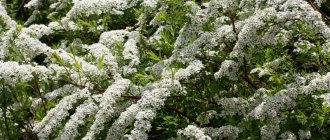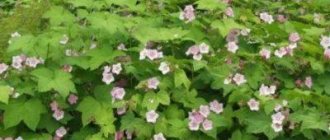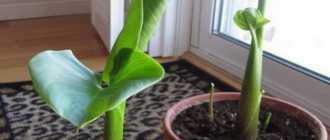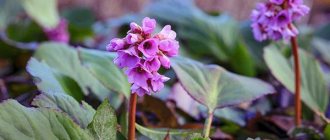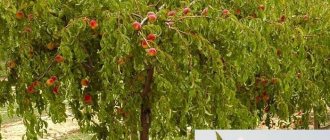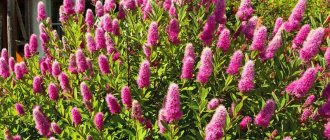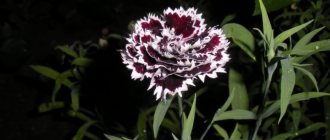Spirea (translated from Greek the word means spiral, bend) has long been known and loved in Rus'. It is often popularly called meadowsweet, and this word applies to the genus Spiraea, although the meadowsweet plant is a herbaceous rather than shrubby species.
Spiraea gray Grefsheim is the most common type of ornamental shrubs in garden plots. Its hanging branches with dense white flowers resemble a floral waterfall.
Spiraea: varieties and description
There are 90 varieties of spirea in the world, and they differ not only in shape and color, but also in the timing of flowering.
Most varieties have curved hanging branches, although upright growing bushes are also found. The division is made according to flowering time.
Spring varieties bloom on last year's shoots, so pruning is done immediately after flowering. Although the spring varieties of spirea bloom profusely, they do not last long, and the flowers are exclusively white.
Spiraea, which blooms in summer, delights not only with its variety of colors - from pink to crimson, but also with the duration of flowering. These varieties are pruned in the spring, as they bloom on young shoots.
Spring varieties include:
- Spiraea arguta (Arguta) is distinguished by long jagged leaves up to 4 cm long. White umbrella inflorescences densely cover a two-meter bush.
- Spiraea vanhouttei (Vangutta) grows up to two meters in diameter and has long arched branches.
- Spiraea cinerea (gray). Spiraea gray Grefsheim (photo below) is the most frequent guest in personal plots. Its white fragrant flowers cover the bush with a continuous carpet, giving it the appearance of a large white ball.
Summer varieties are most often represented by the following varieties:
- S. Japonica (Japanese spirea). This is an erect bush up to 1.5 meters in height with large leaves up to 10 cm in length. It blooms for a month and a half, has many species, differing in color from each other.
- S. betulifolia (birch leaf). It is unique in that its foliage, very similar in shape to birch, takes on a vibrant yellow and purple appearance in the fall. Corymbose inflorescences are pink or white.
- S. x billardii (Billard's spirea) is often planted as a hedge because it is easy to maintain and trim. It has large pyramidal inflorescences of pink color.
Spiraea with spike-shaped inflorescences (Douglas, Lemoine, willow and others) is considered a separate species. They bloom in mid-summer, rarely reaching September.
Care
Watering
It is not necessary to water gray spirea often, but abundantly: no less than 1.5 buckets for one bush. Watering can be done 2 times a month, but if there is no rain, then 2 times a week.
Due to the fact that the roots are located close to the surface, mulching is necessary after each watering.
Top dressing
Feeding shrubs should be done after spring pruning and before flowering. For watering, you can use diluted cow or chicken droppings, then water the plants with water with superphosphate (8 grams is enough for one bush).
Watering spirea with water with superphosphate for feeding
For the most luxuriant flowering of bushes, in the spring you can use Kemira-universal at the rate of 90 grams per square meter of soil.
Trimming
Flower buds of gray spirea are laid almost along the entire length of last year's shoots, so there is no need to carry out spring pruning every year.
If you remove parts with flower buds, then there will be no flowering this season.
Sanitary and bush-shaping pruning is carried out every year in April. To do this, it is necessary to remove weak, frozen, aging, broken shoots.
Obsolete shoots of the gray spirea bush are cut out every 7-10 years
An old bush can be rejuvenated by cutting it “to the stump” - from the dormant buds that are located near the root collar, shoots will develop, from which it will be possible to form a bush when it grows up.
After flowering
Gray spirea has high frost resistance, but if there are temperature fluctuations in winter and thaws replace frosts, problems may arise. In this case, it is necessary to cover the root zone and mulch the trunk circle of young plants with dry leaves or peat, protecting their underground part from frost.
Spiraea gray Grefsheim: choosing a place for planting
This amazing plant always attracts attention. During flowering, it looks like a snowball, and during the dormant period, its leaves, grayish in summer and bright yellow in autumn, densely covering the curving branches, resemble a ball.
To decorate the site, it is important that the plant takes root and grows quickly. Spiraea gray Grefsheim is no exception. Planting a shrub begins with choosing a location. It should be well lit, as even partial shade slows down its growth. Many summer residents plant spirea along fences on the sunny side of the site.
The quality of the soil in the selected area is also important. Spiraea gray Grefsheim takes root well on any soil (alkaline, neutral, acidic soils), if it is not too dry. The best time for planting is autumn, when the foliage has already dropped, although it can be done in the spring, before the buds appear.
Landing
The most favorable time for planting gray spirea is autumn, before the end of leaf fall, but you can plant it in the spring, before the buds appear. The most suitable weather is a cloudy day, ideally if it drizzles.
Planting gray spirea in the ground
For planting you need to choose a sunny place. Planting in the shade is possible, but in this case the gray spirea will develop more slowly and flowering will not be abundant. The soil should be nutritious and loose.
Heavy soil should be diluted with leaf or turf soil, and clay soil with peat or sand.
To plant a seedling, you need to dig a hole that will be much larger than its root system. Since gray spirea prefers moderate humidity, drainage must be placed at the bottom of the hole. The drained bottom should be sprinkled with soil mixed with fertilizer, the seedling should be placed on top, its roots straightened and sprinkled halfway.
Before planting, you need to inspect the roots and trim any that are dry or too long.
Next, you need to fill the hole completely and water the seedling with about a bucket of water. After the moisture is absorbed, the seedling needs to be pulled up to give the roots the opportunity to take a comfortable position. After this, you need to compact the soil, water it and sprinkle it with mulch in order to retain moisture.
Spirea sulfur requires a large area, since its root system grows greatly.
Planting scheme for gray spirea
Since the gray spirea Grefsheim grows quite powerfully, when creating a hedge it is recommended to maintain a distance of up to half a meter between the bushes. Between rows it is 40 cm.
If you plant plants in groups when decorating a site, the distance should be 50-70 cm, sometimes up to one meter. The width of the planting pit for spirea should be 30 percent greater than the size of the root system. The depth is from 40 to 50 cm, taking into account drainage.
This ratio of the distance between the bushes and the volume of the holes allows the spirea to grow quickly.
Planting spirea Grefsheim
Spiraea is an unpretentious plant to grow in. However, if you want to quickly get a lush shrub with a luxurious crown, you should choose the right place to plant it. It should be well lit, and the light should penetrate well from all sides. This will help avoid one-sidedness.
There are also no special requirements for soil composition. But the plant will develop better and bloom more abundantly if the soil is nutritious, moderately moist and drained. If you have time and the opportunity to more thoroughly prepare the planting site, you can prepare the following composition: 2 parts turf soil, 1 part sand and 1 part peat.
Gray spirea grows in width very quickly, so for hedges it is recommended to plant them at a distance of at least 50 centimeters from each other. If you plan to plant two or more rows, then the distance between them should be kept the same.
Gray spirea bush Grefsheim - grows spreadingly
Planting is done in holes 40-50 centimeters deep, taking into account drainage. The width of the hole should be one third larger than the root system of the seedling.
Grefsheim gray spirea is planted in the fall after the leaves fall or in early spring before the buds open. In order for the plant to quickly take root and develop well, the soil should be mulched with peat, small sawdust or rotted leaves.
Care for spirea sulfur
Spiraea gray Grefsheim, the care of which does not require close attention, is very attractive to gardeners.
For this variety, moderate watering with loosening of the soil and removal of weeds is recommended. Mulching can be done to a young seedling, for which it is enough to sprinkle the ground with a layer of peat. Since gray spirea Grefsheim is used to form a hedge and trap dust and cold air, we can safely say that this is a frost-resistant plant.
The only thing this variety of spirea reacts poorly to is temperature changes. In unstable climates, it is advisable to cover the roots of the shrub for the winter, for which it is enough to sprinkle a thick layer of leaves on them. One of the most important factors in caring for spirea is its pruning.
Application in landscape design
The shrub is popular from amateur gardeners to professional landscape designers. Rarely does a site go without it. Spiraea is an important object in many landscape styles and everywhere it plays an important role. From afar, the brush inflorescences look like a bush dusted with snow. Which becomes an excellent opportunity to combine spirea in various combinations, playing with contrast, and to plant it as an independent landscape object.
The variety of species and functionality of the shrub allows you to create flower beds that bloom from early spring to late autumn. By combining several variations of the shrub, you can create a wide range of shades (from light pink to deep pink) that will be covered in flowering after each other. A string of flowers will decorate any area and focus attention on the selected area. If desired, gray spirea can be planted as an independent design element. It itself creates a holistic and original image.
Urban conditions
In urban environments, the plant is used as a hedge near administrative and children's institutions. The shrub tolerates gas pollution well and takes an active part in air purification, thanks to the released phytoncides. By following the planting rules and not mixing several types of plants, you can achieve a truly complete natural fence. Even after flowering, the plant decorates the area and separates the necessary zones from each other with a dense wall.
Classic style
In the classic style of landscape design, spirea is most often moved to water. The snow-white beauty, reflected in the pond, creates naturalness and the required plant abundance. Spiraea will perfectly cope with the role of an element in a living corner of nature that has not been touched by human hands. As required by the classic style. Spiraea fits well with exotic plants, fruit trees and other flowering shrubs. Taking into account all the style rules, in the form of symmetry in everything, the shrub tolerates pruning and modeling perfectly.
Country style
The rustic Provence style is chosen by city dwellers who periodically go out to the countryside. All plants, furniture and decorative elements create a homely environment. Gray spirea, being an unpretentious plant, copes well with its tasks. It is in perfect harmony with all the riot of colors of the Provence style, does not require special attention and in any place looks as if nature itself created it. The style of poor aristocrats (aka Provence) values spirea for its sophistication and compactness.
The simplicity and versatility of spirea sulfur is highly valued by specialists in the Scandinavian style. The shrub grows appropriately near huge boulders and wooden garden furniture. In addition to single planting, the plant is combined with an environment of flowers and dwarf trees. Spiraea literally flows into the surrounding area, successfully combining with the variable features of the relief (stone steps, chaotically located boulders, etc.).
Pruning spirea gray
In order for the gray Grefsheim spirea to bloom and grow in the area for as long as possible, pruning is not carried out every year.
The peculiarity of this variety of spirea is that their flower buds cover the entire last year's shoot. If you prune annually, the bush will not bloom this season. It is optimal for gray spirea to trim only the frozen tips, and after seven years of growth it is time to remove the old branches.
Spiraea gray Grefsheim, planting and caring for which is not at all burdensome, lives up to 30 years, so deep pruning is recommended to rejuvenate the bush. In this case, the plant is pruned to a stump, which allows it to gain strength and send out new young shoots. In the area of the root collar of the spirea there are numerous dormant buds that wake up when deep pruning is carried out.
A bush is formed from new shoots. To do this, it is enough to leave 5-6 strong branches, and the rest are removed during the first growing season.
It is recommended to thin out spirea every two years, cutting off broken and weakened shoots. To form a beautifully shaped bush, pruning should be done in early spring.
Prices for seedlings
| Seedling age | Height | Root system, pot volume | price, rub. |
| 2-3-4 years | 30-70 cm | ZKS (S-3, S-4, S-7) | 400-600-1500 |
| 3-4-5 years | 50-90 cm | OKS (from the field) | 500-800-1000-1500 |
| ZKS – closed root system (plants in pots) S-2, S-3, S-5, S-7, S-10 – pot volume (2 l, 3 l, 5 l, 7 l, 10 l) OKS – open root system (plants are dug up from the field) | |||
Have questions? Call by phone
Reproduction of spirea sulfur Grefsheim
In order for the beautiful flowering spirea gray Grefsheim to grow on the site, it is best to propagate it by cuttings.
Young shoots are absolutely not suitable for this, even if they give a riotous color. For propagation, it is necessary to select only lignified branches, from which the top and part of the leaves are removed immediately after cutting.
The tip of the branch needs to be cut off at an angle, and then the cutting should be planted in loose, moist soil. To grow strong and healthy seedlings, cuttings should be planted at a distance of up to 20 cm from each other and kept in a warm room with high humidity. If there is no greenhouse or greenhouse, then it is important to ensure that the soil does not dry out. Frequent watering of cuttings is the key to their rapid growth.
Once the cuttings have taken root, they can be transplanted into open ground both in spring and autumn. Sulfur spirea bushes rarely get sick, but prevention from pests and diseases will not be superfluous.
Reproduction
Seeds
Gray spirea is a hybrid variety, so it is not propagated by seeds.
Cuttings
Cuttings are made from old, woody shoots. In the fall, after flowering, it is necessary to cut the cuttings, removing the top and part of the leaves, and place them in a substrate of peat or sand. You need to keep the cuttings in a “greenhouse” - a plastic bottle with a cut bottom. It is necessary to ensure that the soil is always moist.
Cuttings of spirea sulfur planted in a pot under glass
In order to increase rooting, you need to put the cuttings in water with the addition of Epin for 6 hours, and before planting, sprinkle the cut area with Kornevin and plant with the cut side down.
You need to plant cuttings in open ground in spring or autumn, and cover them with leaves for the winter.
Dividing the bush
Rhizome division is carried out in the fall. To do this, you need to carefully dig up the bush and shake off the adhering soil so that you can see the division points.
Dividing a Spiraea bush using pruning shears
You need to divide in such a way that each bush has at least two strong shoots and a strong, healthy root lobe.
Diseases and pests of spirea sulfur Grefsheim
Although spirea is considered a strong shrub, it also has pests, although they are few in number. To avoid troubles, it is advisable to carry out preventive work.
- Spider mites affect not only this type of shrub. The main signs of pest activity are the appearance of cobwebs on the shoots, fallen leaves that have turned yellow at the wrong time, holes in the leaves and inflorescences, and an unhealthy appearance of the bush. It is easy to get rid of by spraying with 0.3% karbofos.
- Aphids primarily harm inflorescences and young foliage, as they bite them off and suck out the juice. To kill aphids, spraying with a 0.1% solution of pyrimor, which is also harmful to other types of pests, is suitable.
- The roseate leaf roller can destroy from 20% to 60% of the leaves of a bush. The caterpillar twists them and gnaws them out.
If you spray spirea with chemicals before the beginning of the growing season, then it will not be in any danger, since this plant rarely gets sick.
Pruning spirea after flowering, in autumn and spring
Spiraea tolerates cutting very well; it can be given absolutely any shape.
Why cut spirea?
- To give it a neat and aesthetic appearance, as well as shape.
- In addition, regular cutting stimulates both active growth and branching of shoots, and powerful flowering.
However, depending on the variety, the timing of pruning spirea differs slightly.
In any case, in early spring (it is advisable to prune before the buds swell, but at a stable above-zero temperature), sanitary pruning of frozen and damaged branches is done.
Spiraea can be divided into:
- White-flowering spirea (White, Gray, Vangutta, Nipponskaya) - bloom on last year's shoots (they are also called spring-flowering). Such spirea need to be formed only after flowering, otherwise they may simply not bloom next year. As a rule, when forming, branches are shortened by an average of about 1/3.
But anti-aging pruning (for shrubs older than 4-5 years) can be done both in early spring (before flowering) and in autumn. The same applies to thinning pruning (when excess and thickening branches are removed).
So, for example, in early spring you should remove all the old thick branches (as thick as your thumb), and after flowering, give (or restore) the bushes the desired shape.
Spiraea gray
- Pink-flowering spirea (Japanese, Bumalda) - bloom on the shoots of the current year (they are also called summer-blooming), so they can and should be cut both before and after flowering, i.e. Anytime. As a rule, Japanese spireas are cut 3-4 times per season (including in the fall).
Advice! Prune Japanese spirea in the summer, after the first flowering, then it will bloom again in the fall.
Video: how many times a year to cut Japanese spirea - pruning in summer, autumn and spring
Thus, after flowering and in the fall, it is worth pruning all varieties of spirea.
How to prune spirea in the fall?
As for the timing, it is advisable to do the autumn pruning of spirea 2-3 weeks before the first frost, so that the cuts after pruning have time to tighten and heal.
- First, at a minimum, remove all faded flower stalks from the spirea.
- Next, carry out formative pruning. For example, you can trim the ends so that the spirea resembles a ball in shape, completely cut out all the branches that lie on the ground, and trim shoots that grow inward to the outer bud.
- Of course, we should not forget about sanitary pruning (removing broken, dry and painful shoots).
Video: autumn pruning of Japanese spirea
Spiraea gray in the landscape
Landscaped gardens are becoming increasingly popular, and shrubs such as spirea are in constant demand. They are used to create hedges, and for alpine slides, and for group compositions.
To form beautiful groups, the best partners for gray spirea are broom, viburnum, multifloral oleagin and conifers. Against their background and in their surroundings, spirea looks even more elegant and whiter.
Spiraea in mixborders
Spiraea can be planted in mixborders both in the foreground and in the background thanks to the huge selection of its varieties and varieties. Shrubs are placed in continuous rows, dotted, alternating them with other plants, or placed as point accents.
Bright flowers look advantageous against the background of a bush, and some types of spirea, such as Nippon or gray, can themselves be a contrasting element in a mixborder.
Spiraea nipponensis Snowmound:
Spiraea gray "Grefsheim":
